Melanocytic activation
This is an increase in the production and deposits of melanin in your nail but not an increase in pigment cells. It can be triggered by trauma, nutritional deficiency, medication, and other causes.
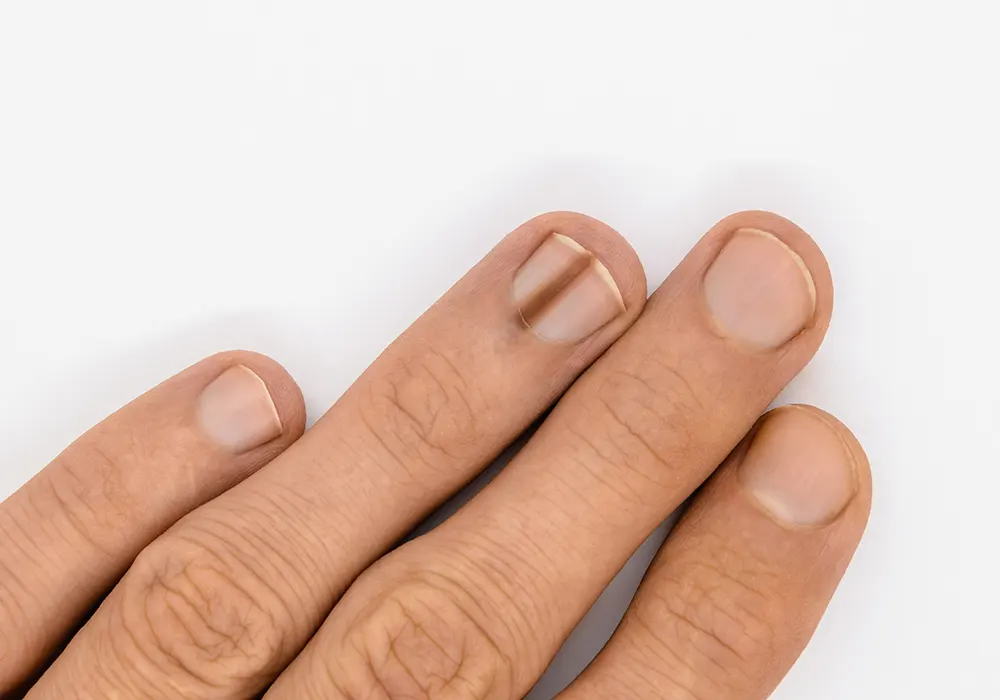
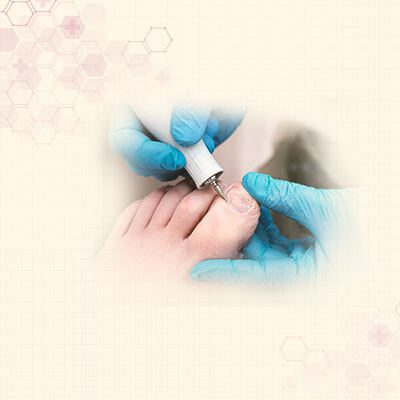
Melanonychia is the appearance of brown or black lines on your nails. The decolorisation usually appears as a stripe that starts at the bottom of your nail bed and continues to the top. It may appear in one nail or several. However, these lines can be a natural occurrence if you have a dark complexion.
Melanonychia treatment in Bangalore can diagnose any underlying health issues, if any.
No matter what the cause may be, you should always have a doctor check the condition.

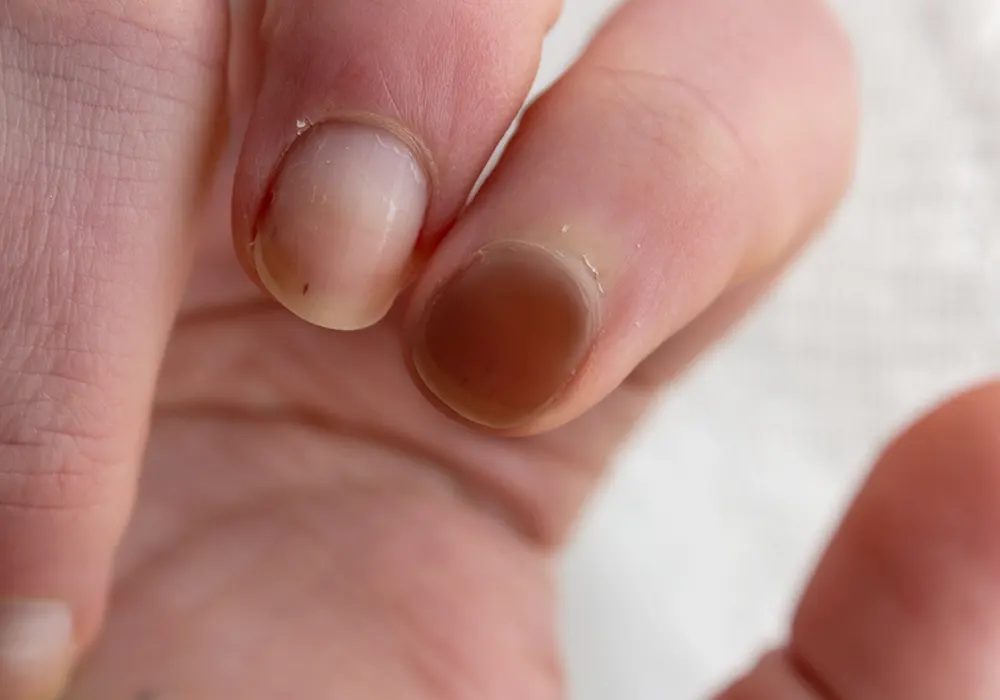
Melanonychia can appear on fingernails or toenails. It can also appear on more than one nail at a time.
It may look like:
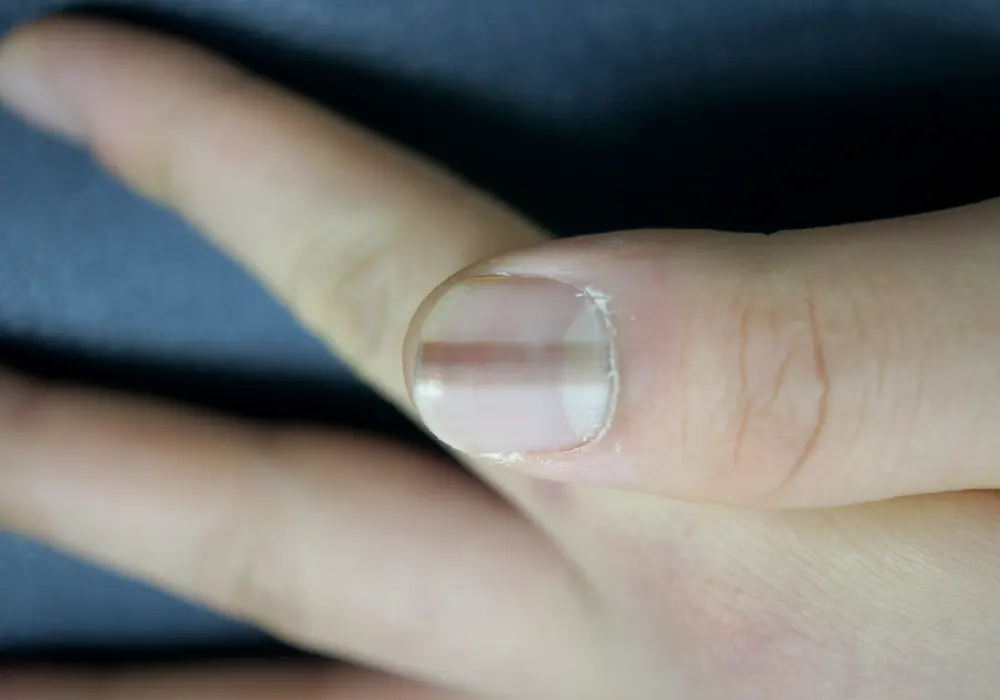
The nails of your toes or fingers are usually translucent and not pigmented. Melanonychia is caused when the pigment cells, called melanocytes, deposit melanin — brown-colored pigment into the nail. These deposits are usually grouped together. As your nail grows, it causes the stripe of brown or black to appear on your nail.
Melanin deposits are caused by two primary processes, which have different causes.

Melanonychia Treatment in Bangalore varies depending on the causing factors.
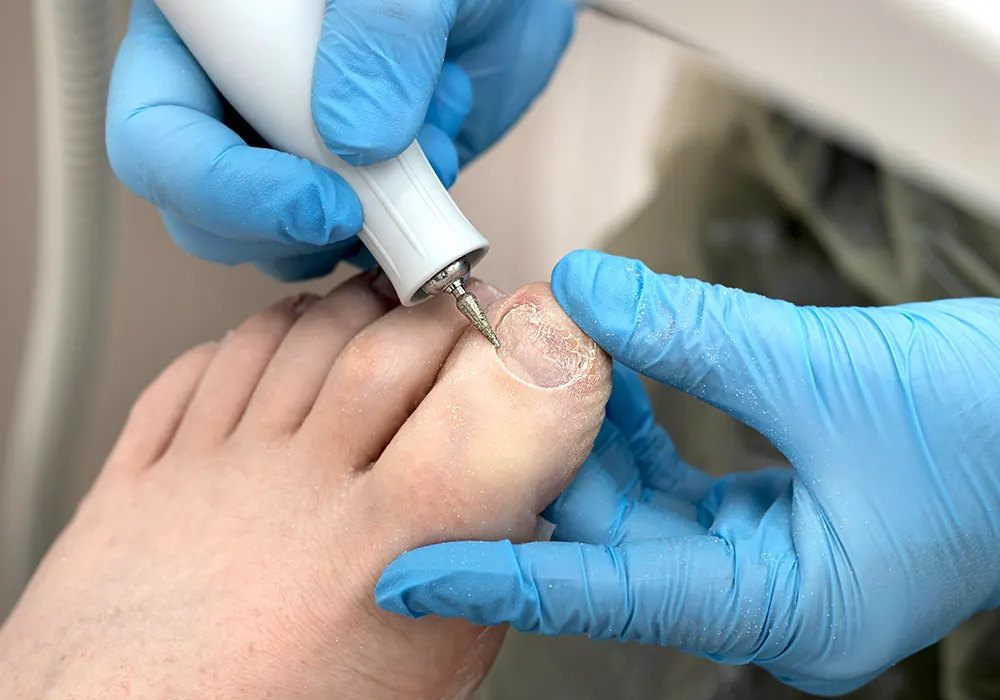









Comprehensive skin, hair & nail care solution provider

Smooth connectivity from all parts of Bangalore

Alternative treatment options and expert guidance for effective treatment

Treatment solutions that deliver long-term benefits

Listen to our client’s heartfelt praise for Dr. Tina’s revolutionary treatment, leaving her feeling confident and beautiful with outstanding results. Join her incredible journey towards radiance and confidence with Dr. Tina’s life-changing approach.

Discover our client’s glowing testimonials about how we expertly resolved their pigment problems, leaving them worry-free and brimming with confidence. Don’t miss out on life-changing skincare solutions.

Discover the extraordinary expertise of renowned dermatologist, Dr. Tina Ramachander, who excels in treating a wide range of skin, hair, and nail conditions. Benefit from her specialised knowledge and receive personalised advice tailored to your unique needs. Embrace expert guidance today to unlock the secrets of glowing skin, beautiful hair, and strong nails. Take the first step towards radiant beauty!

Listen to our client’s incredible journey of conquering acne issues with our personalised care and treatments. Witness her stunning transformation over the past year and find inspiration to prioritise your own skin health.
10:00 am – 06:00 pm
10:30 am to 06:30 pm
10:45 am – 05:00 pm

Dr. Tina's Skin Solutionz
11/12, Sahakarnagar, Bellary Road, Below Bata showroom Bengaluru, Karnataka 560092, India